Learn how to rig jigheads onto various soft plastics popular for inshore fishing. When you do, you'll catch more speckled trout and redfish!
That's because the fishing in Louisiana can get really good. It’s so good a novice can fish with poorly rigged tackle and still catch a fantastic box of speckled trout and redfish. I know, because I used to be that guy.
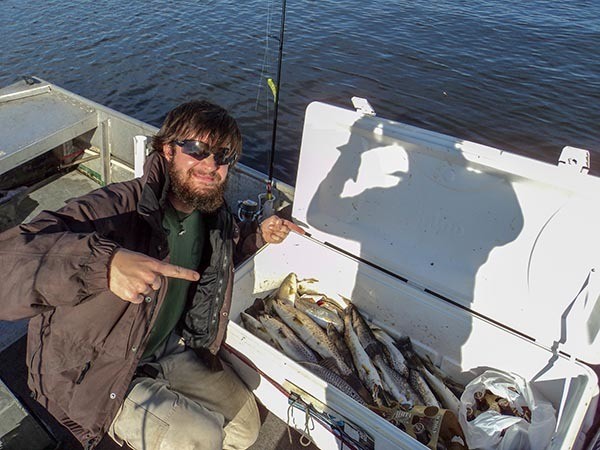
But when the fish got finicky I stopped catching them so easily! I eventually learned how to throw a jig, and part of that journey was learning to properly rig jigheads in the first place. Once I mastered that, I began catching more speckled trout and redfish, especially when the bite got tough.
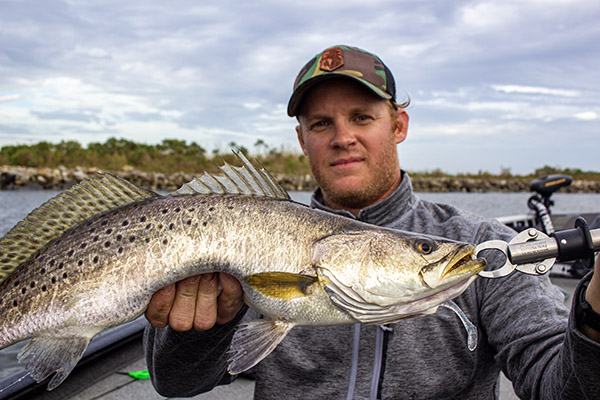
Nicer speckled trout tend to become easier to catch when you rig your tackle correctly.
How to Properly Rig Jigheads and Soft Plastics
In this guide you'll learn how to rig jigheads onto:
Orient The Lure On The Jighead Correctly
The tail must be pointed down and the hook pointed up. This is how paddle tail baits are made to swim through the water. Straight tail baits don’t have this feature, so rig them on a jighead them with the belly down. Sparkle beetles can be rigged with the red dot on the side, top or bottom.
One exception to these rules are the Deadly Dudley Rat Tails. Rig those with the textured side up. Berkley Live Gulp Shrimp in New Penny are another. Sometimes they have the darker color on the bottom of the lure, rather than on top. Rig these with the darker color on the bottom.
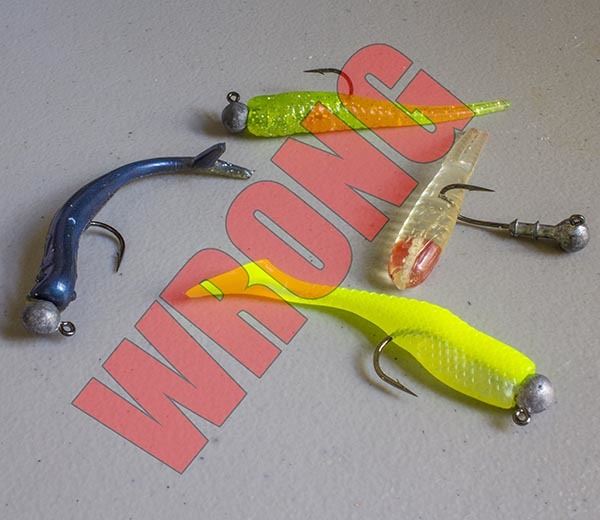
The above picture depicts the incorrect way to rig jigheads. They are crooked, upside down and, like the sparkle beetle, just plain wrong. The soft plastics below are oriented correctly on a jighead.
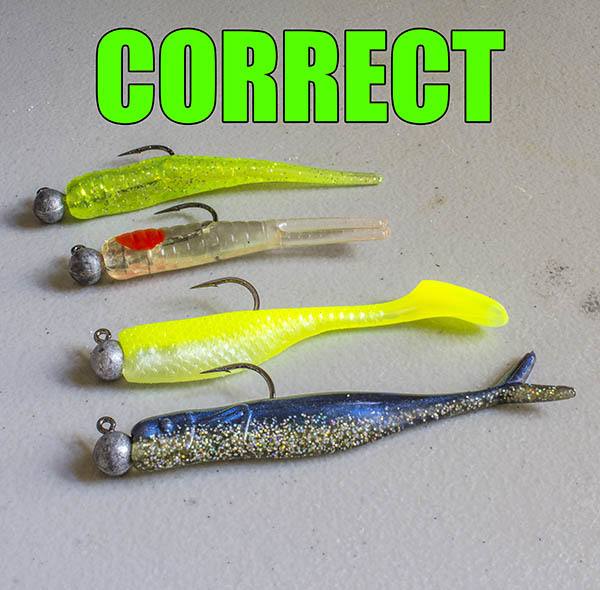
Rig Jigheads So the body Is straight, not crooked
If a soft plastic has a straight back then it needs to be rigged onto the jighead in such a manner that it remains straight.
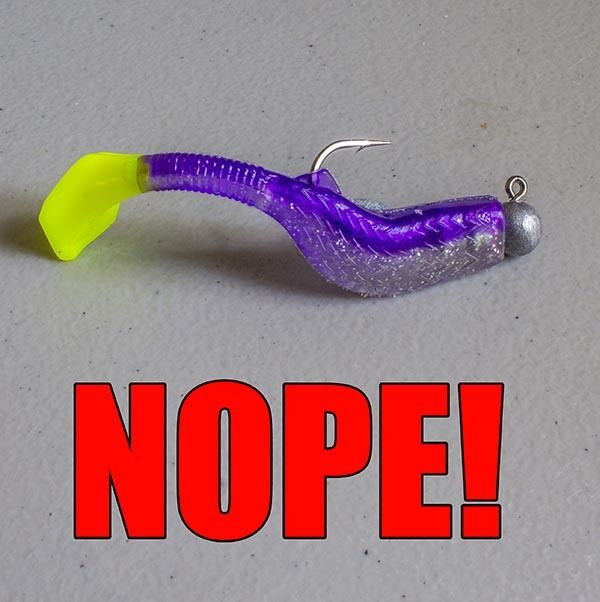
The above picture is not the correct way to rig jigheads onto a Vortex Shad. The body needs to be straight so it swims correctly and hook sets are complete.
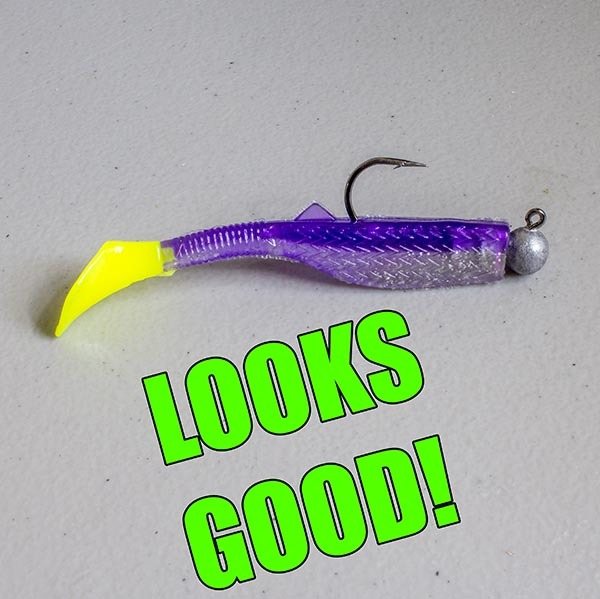
This is how it’s done! You want the body straight so the paddle tail can do its job. Also, the hook is exposed more to better pin the fish.
Rig Jigheads To Be centered, not off to the side
The hook must exit the lure’s body in the center or the bait will not swim correctly. A funny-swimming bait is less likely to get bit by a fish and makes for inconsistent action when swapping colors or fresh bodies.
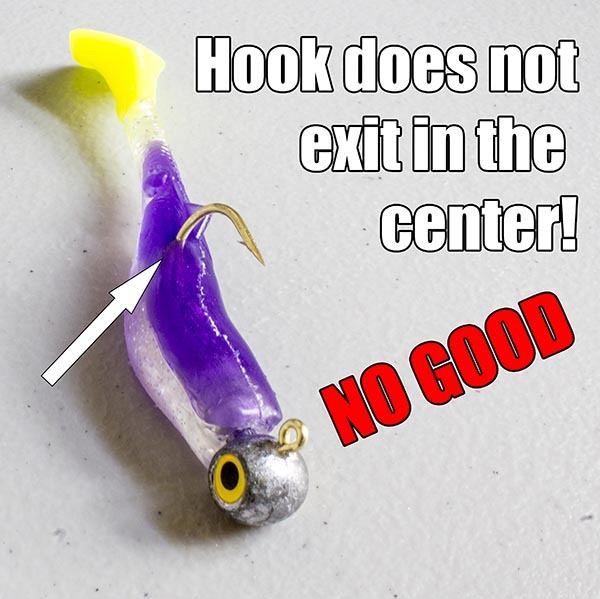
If the hook exits the body off-center the lure will swim at an odd angle through the water. This can deter a fish from striking, especially during difficult bites like what you may encounter on The Trestles.
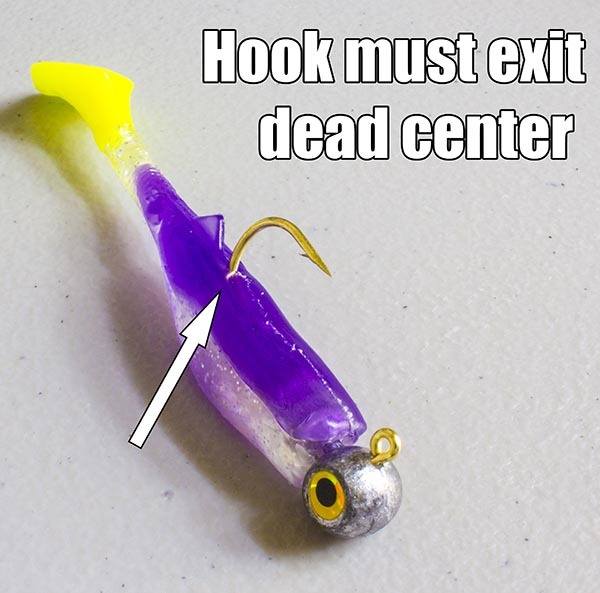
You want to rig jigheads so that the hook exits dead center from the lure body. This way the lure swims straight through the water and fish are more likely to bite.
Just remember this simple trick...
A simple trick to rig jigheads is to lay it over the lure body to visualize where the hook should exit. This way you get it right the first time and avoid destroying the soft plastic with multiple attempts. This way water flows against it, and not with it, creating maximum action as the bait falls.
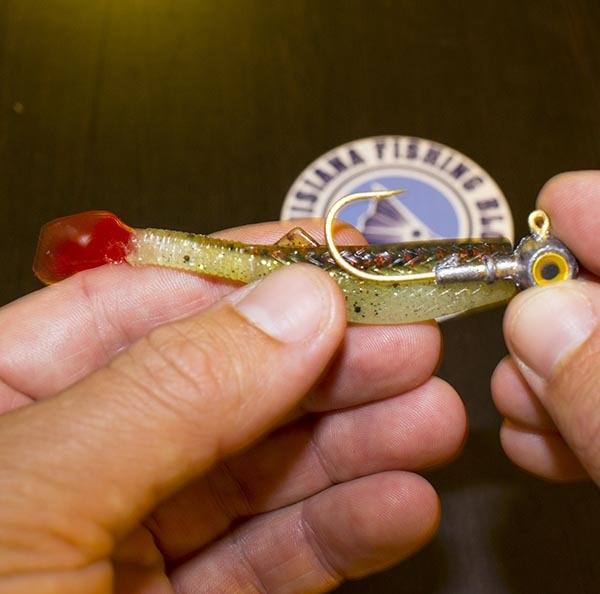
How To Rig Jigheads On Curly Tail Grubs
Rig these like any other soft plastic, but with the special consideration that the tail is facing down, opposite from the hook.
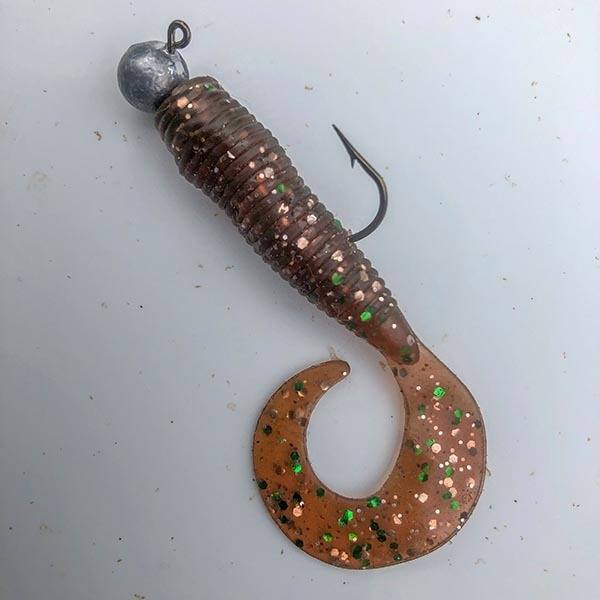
The next step is to get the bait in front of the fish...
So now you know how to properly rig jigheads on popular soft plastics used for inshore fishing: paddle tail swimbaits, straight tail soft plastics and curly tail grubs. But it doesn't matter how well your lure is rigged because if a fish never sees it then how can she possibly bite it?
The next step is to learn how to get your lure in front of fish so they can bite it. For that I recommend my free video course detailing exactly how to do that.
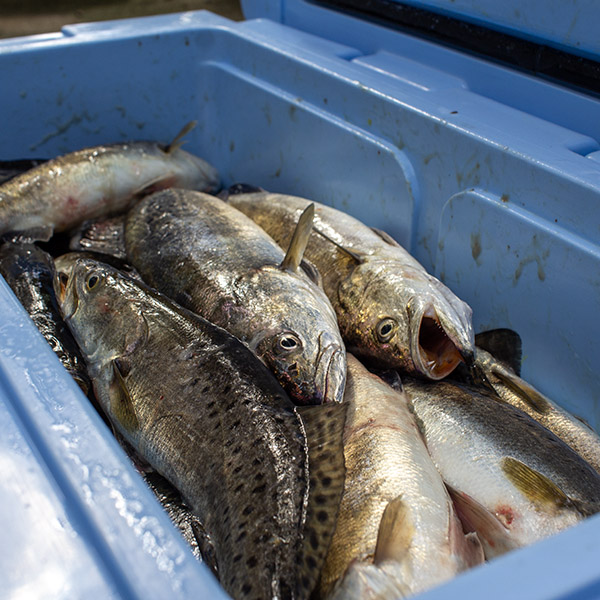
Learn how to find biting fish and you'll consistently make great catches!
But there's one more important detail...
The best thing you can do is find biting fish in the first place. If you can pull this off then it really won't matter whether or not you properly rig jigheads because biting fish are going to give it a try anyway.
How do you find this desirable fishing scenario? Well, it begins with judging the conditions, those that are predicted and the conditions that happened leading up to the day of your fishing trip.
After that, you want to be able to safely navigate to those fishing spots and back to the dock. This and more is what I teach inside my flagship course, Inshore Fishing 101, which contains 12 hours of video spread across 50+ lessons with instructor support from yours truly.
More Rounded Angler
I just want to say job well done, Devin!! I think anyone who completes the course will be a more rounded angler, with more ammo in the magazine, so to speak. New angles to think about and apply to their fishing game.
I know I learned a lot, have applied it and have seen the difference that more knowledge produces! Thank you, Devin!!
Jerry LaRocca
Northshore Native
Highly Recommend To Anyone Who Loves Inshore Fishing
Inshore Fishing 101 was an excellent experience. I learned a lot of good information.
I think the most important thing that I learned was how to use Google Earth Desktop to find new fishing spots and avoid hazards. I never realized how awesome of a tool it is.
Above all, I really enjoyed the attention to detail. I feel like the information inside this course is so broken down that anyone can understand it.
Trey Guidry
Louisiana Native
Captain Devin's Program Is Worth Your Time
I am a member of LAFB Elite, and can say that Devin is a very knowledgeable guy when it comes to fishing Louisiana's coast.
The investment in his courses is definitely worth it.
Plus, you can go back and look at all the past seminars or refresh what you've already taken.
Scott Ruiz
Lifelong Inshore Angler
Over To You
Do you have a preferred way to rig jigheads? Is there something you think this guide is missing and could benefit from? If so, please share it in the comments below.
Tight lines, and thanks for visiting!

Interesting stuff
That’s 100% the truth! Thank you for commenting.
The difference between fishing and catching are the little things, pay attention !!!
That’s why fishing is awesome, one never stops learning. Thank you for commenting.
I’m 78 and just learned a new trick they all add up thanks
Thank you, Louis!
Very good information!
I’m glad you took time to read it and especially glad you enjoyed it. Thank you!
Wow! I needed this.
Thank you. (Im 47 and still learning)
Thanks, Dwight!
Very helpful information here Devin. Thanks and keep this stuff coming.
It works for Michael Iaconelli, and he’s won $2,650,205 in Bassmaster events alone. I’d say that’s the way to rig a curly tail grub. lol
Of course, speckled trout are not nearly as discerning as largemouth bass, at least not the smaller schooling types often targeted by inshore anglers.
I’m sure there’s a lot of 3% Theory going on there, but since it takes virtually zero effort to do, it’s how I rig it anyway.
Thanks for commenting!
Have I been rigging my curly tail grubs wrong my whole life?Always rig hook and tail up and. Am a trout fisherman first of all salt species.
Yes, I have. It’s referred to as “Whacky Rigging”. I have not seen it to be more effective than what’s described here for catching inshore species, especially speckled trout.
Have you ever heard of technique where a plastic lure is intentionally hooked belly side up to mimic an injured bait fish?
“Place the jighead on top of the soft plastic to see how it should be threaded and you will get it right every time.” Something so simple, yet it never crossed my mind! Thanks.
I’m glad you liked it!
Learned a lot. Thanks